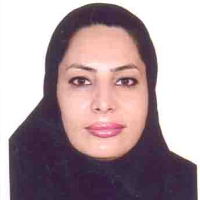Geomorphic Threshold of GhezelOwzanBasin
Author(s):
Abstract:
Introduction
The threshold word that entered the field of geomorphology studies by Schumm and Fabric in 1980 represents the time that a system reacts to an external factor such as climate change (Vitek&Giardino, 1993). The main difference between the internal and external types of thresholds is that internal alters donot change the structure of the system, but the outer threshold that is affected by external factors, changes and transforms it into a geomorphic system (Elverfeldt, 2011).A geomorphic system is confronted only with changes in external variables with external thresholds.Such as the reaction of alluvialfan systems, rivers, glaciers, etc., to climate or tectonic changes that make the geomorphic system more adaptable and adapt to new conditions(Huggett, 2011).One of the basic subjects in geomorphic studies is how to check the process of changes in the levels of the earth. Nowadays, the essence of geomorphic studies includes the analysis of form and geomorphic process on the level of the earth. In systematic view, geomorphic analysis is based on the form and process. Since geomorphic thresholds show the border conditions in making changes and in order to understand time changing, it is one of the basic concepts in systematic theory, it has a high value. GhezelOzanRiver and its branches in the Quaternary period have constantly been redirected to geological adaptation.As a result of these displacements, the process of alluvial to fluvial or fluvial to alluvial has changed in the opposite direction.These displacements are still ongoing and cause the river to stay away from the geomorphic equilibrium.The study of alluvial, fluvial and equivalent levels with the help of geomorphic thresholds is the main purpose of this paper. The GhezelOwzan river system is located in the North West of Iran and it pours in the Caspian Sea. This river finds its source in mountain of Kurdistan and length of over 550 km after crossing the provinces of Zanjan, East Azarbaijan, Ardebil and receiving multiple branches along your route anymore confluence with the river in Gilan province into the dam Sefidrud. Basin area is of nearly 49400 sq2. The river is located between the provinces of Kurdistan, Zanjan, East Azerbaijan, Ardebil, Hamedan and small part of Qazvin, West Azerbaijan and Gilanprovinces. The study area is located between 46.45° 49.33°E and 34.92° 37.92°N.Material and
Methods
This survey, which is based on library studies in the provinces, areas and balance on the way to systematic analysis, tries to study its threshold and categories in GhezelOwzan Basin. So, according to this analysis they are studied in three different areas, internal, external, synthetic samples of measurement curves of lithology, bondage and deviance, erosion_ ditch, gradient, geomorphology and geoneron to understand the subject better.Analyzing virtual form and processes basin have been carried out with the help of topographic, lithology, slope, drought maps (with the help of SPI and Moran index), geonerons (with the help of isotherm and isohyet maps, and using Justin), track ancient lake and erosional surfaces, geomorphological evidences captivity and diversion.Results And Discussion
Rivers and captivity deviations can be detected in several ways: 1- Redirect with angles of 90 degrees or more along the rivers. Over time, rivers achieve a balance in their basin in terms of their topographical, hydrological and drainage condition.The bed of streams that are lithologically homogeneous there is no maze created by redirection. 2- Elementary and middle part of the river that is the source of the water, sediment and the coastal route (sometimes in the water), the sediments is of record. Alluvial deposits are not at the sources.The presence of alluvial deposits at the origin of GhezelOzan, either due to a redirection of the river, or due to the construction of the source ofGhezelOzan Plains 3- Over time a basin is almost symmetric, itmeans that the left and right banks of it become the same in size and is symmetrical over the time. It is the result of tectonic disturbance of fetal status or captivity and diversion of rivers; the main factor in much of GhezelOwzan, was to change the course of rivers. Shorter duration of waterways on one side than the other side of the river in GhezelOwzan, indicates the redirection of the river.4- The height difference is an inevitable phenomenon in the coastal watershed,but presencea difference in elevation along with less drainage length and diagenetic alluvial deposits in the dividing line, indicate the 90 degrees redirection of the river, relative to the previous track.The side of the river, which has a lower altitude, shows the length of the river's previous course. Such effects are very prominent in the direction of river redirection.Contour lines with deep pulses or deep sinuses between and below the contour lines of smooth to simple sinuses are a reason for river redirection.The prolongation of the equilibrium leads to a smooth contour lines, and the collapse of the equilibrium leads to the overcoming of recoil erosion and generates deep pulses in the contour lines.Conclusion
The results showed that in the southern part of the zone a kind of geomorphic balance has yielded and the reason is the slow deplete of Bijar and its erosion surface configuration. By depleting these surfaces, the main rivers like Angoranchae and Sojasrood changetheir path and through a deviated path in present situation enter another place in GhezelOwzan Basin. The study of the zone geonerons also showed that Zanjanroods ford and Myane were absorbed; the amount of water which is less than the amount emerged it and if the rivers such as Angoranchae and Qaranghochae werenot joining on the path, so the river dried. In this case, the major sub rivers of the zone (Source and ford) are part of the reinforces and this occasion caused the GhezelOwzan River to be survived because of material and energy from sub rivers and to be away from their geomorphic equilibrium.Language:
Persian
Published:
Journal of Geography and Environmental Hazards, Volume:6 Issue: 21, 2017
Pages:
127 to 152
magiran.com/p1762816
دانلود و مطالعه متن این مقاله با یکی از روشهای زیر امکان پذیر است:
اشتراک شخصی
با عضویت و پرداخت آنلاین حق اشتراک یکساله به مبلغ 1,390,000ريال میتوانید 70 عنوان مطلب دانلود کنید!
اشتراک سازمانی
به کتابخانه دانشگاه یا محل کار خود پیشنهاد کنید تا اشتراک سازمانی این پایگاه را برای دسترسی نامحدود همه کاربران به متن مطالب تهیه نمایند!
توجه!
- حق عضویت دریافتی صرف حمایت از نشریات عضو و نگهداری، تکمیل و توسعه مگیران میشود.
- پرداخت حق اشتراک و دانلود مقالات اجازه بازنشر آن در سایر رسانههای چاپی و دیجیتال را به کاربر نمیدهد.
In order to view content subscription is required
Personal subscription
Subscribe magiran.com for 70 € euros via PayPal and download 70 articles during a year.
Organization subscription
Please contact us to subscribe your university or library for unlimited access!




